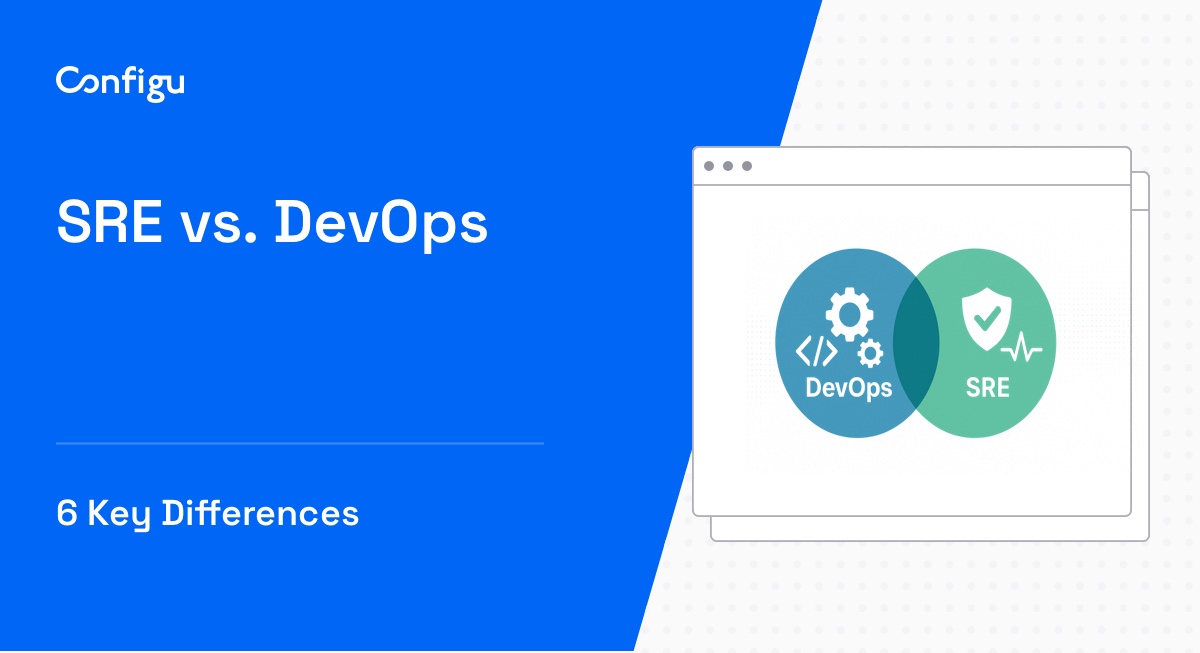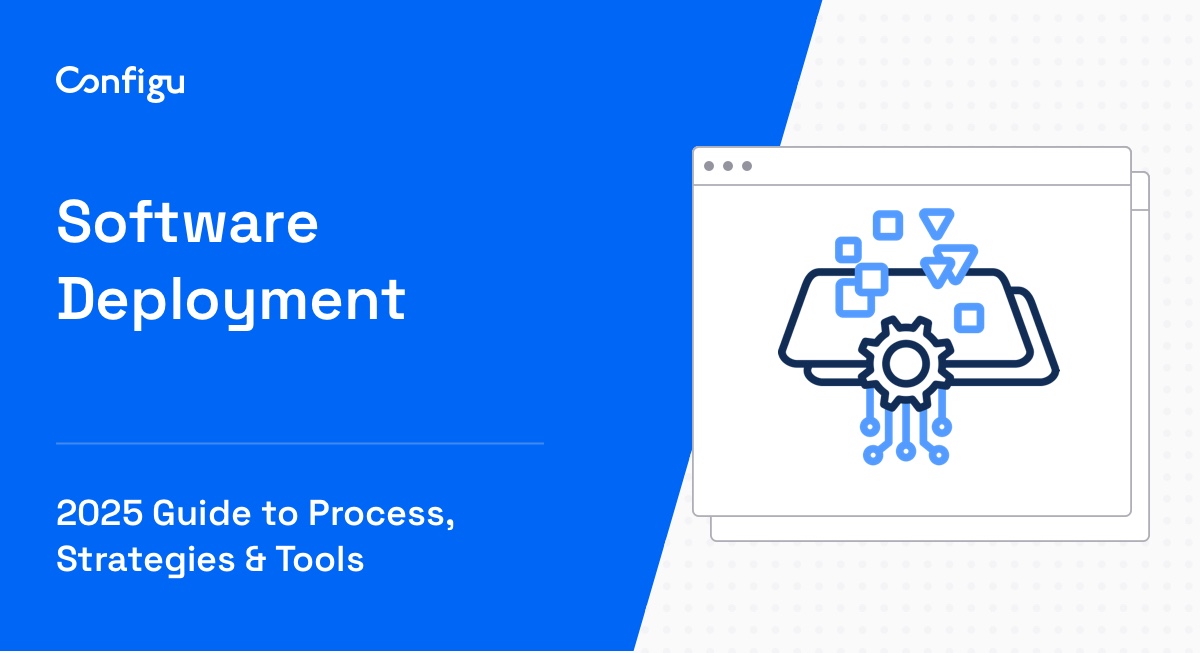What Is Configuration Management?
Configuration management (CM) is an IT process that manages configuration items (CIs), such as hardware and software components. It ensures that a system is always in a known state and can be controlled and replicated over time. CM practices establish and maintain consistency of a product’s performance and functional attributes with its requirements, design, and operational data. Through CM, organizations can mitigate risks associated with change, ensuring a stable and predictable IT environment.
CM tracks and controls changes in the software, relying on automation tools to manage complex environments. This process helps maintain system integrity and enables efficient resource management, reducing errors and downtimes. CM supports compliance and governance, ensuring that systems adhere to specific standards and policies. By documenting changes and configurations, CM ensures that system documentation is up-to-date, easing audits and accountability tasks.
In this article:
Key Roles in the Configuration Management Process
Software Developers
Software developers ensure that new code integrates smoothly into existing configurations. Their collaboration with the configuration manager is crucial in maintaining software version control and tracking dependencies. Developers need to ensure that their work aligns with the baseline configurations, aiding in the reduction of unforeseen changes that could negatively impact system stability. Properly documenting changes and updates is part of their responsibility, facilitating stronger integration and problem resolution.
Developers use CM tools to automate build processes and manage dependencies. By doing so, they improve software integrity and help minimize configuration drift, contributing to more reliable application performance. Their role in implementing CM practices ensures better quality control, enhancing the software development life cycle.
Learn more in our detailed guide to configuration management in software engineering
Configuration Manager
The configuration manager oversees the CM process, ensuring all configuration items are accurately documented and maintained. This individual is responsible for establishing and maintaining the configuration management plan and coordinating with different teams to enforce CM practices. Their work involves defining configuration identifications, managing configuration changes, and conducting reviews to ensure compliance with organizational policies and standards.
Configuration managers must ensure that CM tools and resources are used effectively. They act as a bridge between operations, development, and project management teams to guarantee that everyone is aligned with the CM strategy. This role demands meticulous attention to detail and strong organizational skills to manage complex configurations and documentation.
Project Manager
Project managers in CM integrate configuration management initiatives within the project’s lifecycle. They ensure that CM processes align with the project goals and that resources are allocated efficiently for configuration tasks. Project managers liaise between teams, ensuring that everyone understands the CM protocols and their importance to project success. Their oversight ensures that configuration items are handled correctly, minimizing risks associated with poorly managed configurations.
Project managers track project progress concerning configuration activities to ensure timely completion. They handle escalations related to configuration challenges, managing stakeholder expectations. By maintaining focus on CM throughout the project, they help teams adhere to project timelines and budgets.
Auditor
Auditors verify that configuration management practices comply with internal policies and external regulations. They examine CM documentation and records to ensure accuracy in the tracking and implementation of configuration changes. Auditors also ensure that the established processes adequately capture all relevant configuration data, making certain that these processes are consistently followed. Their work helps in identifying gaps or inconsistencies that could lead to compliance issues or operational risks.
Auditors may conduct regular audits and reviews of the CM process to support continual improvement. Through these assessments, they provide recommendations for enhancing CM effectiveness and efficiency. The assurance provided by their evaluations strengthens organizational governance, ensuring that configuration management practices meet both current operational needs and strategic goals.
Related content: Read our guide to configuration as code
Understanding the Configuration Management Process Flow
1. Define the Configuration Management Strategy and Project Scope
This step involves clarifying objectives, stakeholder responsibilities, and the methodology to be used in configuration management. This strategic plan outlines the scope, detailing which configuration items will be tracked and how changes will be managed. This phase ensures that all stakeholders have a clear understanding of CM priorities and procedures, aligning resources and expectations according to the project’s needs and objectives.
2. Identify Configuration Items, Tasks, and Deliverables
Identifying configuration items involves cataloging all components, including hardware, software, and documentation, that need monitoring throughout the CM process. This step ensures that every piece of the IT infrastructure is accounted for and managed appropriately. Besides configuration items, it’s essential to establish tasks and deliverables pertinent to the configuration management process. These may include setting up version control systems, tracking changes, performing audits, and more.
3. Establish a Baseline of System Settings
Establishing a baseline involves capturing the current state of a system’s configuration, documenting every detail from software versions to system settings. This baseline serves as a reference point for future changes, enabling IT teams to compare current configurations against the standard, known parameters. Baseline establishment is crucial as it sets the foundation for identifying and rectifying configuration drift, which could disrupt system operations.
4. Adopt Change Control and Keep Detailed Records
Adopting change control involves implementing procedures that govern how changes are proposed, evaluated, approved, and implemented within the organization. Through structured change control processes, organizations can ensure that all amendments to configurations are systematically managed to prevent adverse impacts. This process allows for thorough assessment and careful consideration of changes.
5. Monitor the Progress of Configuration Items
Monitoring the progress of configuration items involves ongoing observation and documentation of their status throughout their lifecycle. This monitoring ensures that changes are effectively implemented, and configuration items are progressing through their cycles without incident. Continuous monitoring helps promptly identify deviations from the plan, enabling quick response to any issues or anomalies detected during the process.
6. Conduct Audits to Ensure CIs Match the Expected Baseline
Regular audits are essential to confirm that configuration items align with the expected baseline, ensuring configurations are as intended without unauthorized changes. These audits involve comparing current settings against the documented baseline to verify that configurations are accurate and conform to organizational standards. Auditing provides the opportunity to identify and address discrepancies, and assures stakeholders that the system is well-governed and compliant with governance and regulatory frameworks.
Tips From the Expert
In my experience, here are tips that can help you better optimize your configuration management process:
- Implement proactive drift detection: Instead of only reacting to configuration drift during audits, use continuous drift detection tools that automatically notify stakeholders when configurations deviate from baselines, enabling faster remediation.
- Incorporate infrastructure as code (IaC) into CM: Automate infrastructure configuration management with IaC tools like Terraform or Ansible. This allows configurations to be version-controlled, repeatable, and consistent across environments.
- Enforce immutability where possible: Aim for immutable infrastructure, where once a system is deployed, it cannot be modified. Any changes result in redeployment of a new instance, drastically reducing configuration drift and operational inconsistencies.
- Use configuration data analytics for trends: Analyze configuration data over time to identify trends such as frequently modified configuration items (CIs) or recurring issues. This can help preempt problems and optimize processes.
- Integrate CM into CI/CD pipelines: Make configuration management an integral part of the continuous integration/continuous delivery (CI/CD) process, ensuring that configurations are validated with every deployment, reducing the risk of misconfiguration.
Best Practices for Improving Your Configuration Management Process
Here are some of the ways that organizations can improve their CM processes:
- Automate where possible: Automation tools can help simplify many aspects of the CM process, such as change control, version tracking, and configuration item monitoring. By automating repetitive tasks, organizations reduce human error, accelerate processes, and ensure consistency across configurations.
- Establish clear documentation standards: Clear, well-maintained documentation is vital for effective CM. Define standards for documenting changes, version histories, baselines, and configurations. This makes it easier to track changes, maintain compliance, and improve communication across teams, especially when onboarding new team members or during audits.
- Implement strong access controls: Limit access to configuration items and CM tools based on roles and responsibilities. Implementing strict access controls minimizes the risk of unauthorized changes and ensures that only qualified personnel can make adjustments to configurations, enhancing security and stability.
- Regularly review and update configuration baselines: Configuration baselines should be regularly reviewed to ensure they align with current business needs and operational requirements. As systems evolve, periodically revisiting baselines helps maintain relevance and prevents outdated configurations from causing issues.
- Promote cross-functional team collaboration: Ensure that development, operations, security, and project management teams work closely together in the CM process. Cross-functional collaboration helps identify potential issues early, improves alignment on CM protocols, and encourages a shared understanding of the importance of configuration consistency.
- Integrate CM with DevOps and CI/CD pipelines: Integrating CM with continuous integration and continuous delivery (CI/CD) pipelines improves the software development lifecycle. This integration allows for automated testing, deployment, and tracking of configuration changes, resulting in faster feedback loops, better quality control, and improved system stability.
- Conduct regular training and awareness sessions: Regular training ensures that all team members understand CM practices, tools, and procedures. Awareness sessions help reinforce the importance of CM and highlight the potential risks associated with poor configuration management, promoting a culture of adherence to best practices.
- Establish a process for incident management and rollback: Have a clear incident management process in place to quickly address configuration issues as they arise. This should include defined rollback procedures to revert to a previous stable configuration if a change causes unexpected issues, minimizing downtime and disruption.
- Perform continuous auditing and process improvement: Regular audits help identify gaps in the CM process and ensure adherence to best practices. Use audit findings to refine CM procedures, improve documentation quality, and enhance automation efforts.
- Align CM with organizational policies and industry standards: Management practices should align with internal governance policies and industry standards such as ITIL, ISO 20000, or NIST. This alignment ensures compliance, reduces the risk of regulatory penalties, and builds a framework for standardized and effective configuration management across the organization.
Automating Configuration Management with Configu
Configu is a configuration management platform comprised of two main components:
Configu Orchestrator
As applications become more dynamic and distributed in microservices architectures, configurations are getting more fragmented. They are saved as raw text that is spread across multiple stores, databases, files, git repositories, and third-party tools (a typical company will have five to ten different stores).
The Configu Orchestrator, which is open-source software, is a powerful standalone tool designed to address this challenge by providing configuration orchestration along with Configuration-as-Code (CaC) approach.
Configu Cloud
Configu Cloud is the most innovative store purpose-built for configurations, including environment variables, secrets, and feature flags. It is built based on the Configu configuration-as-code (CaC) approach and can model configurations and wrap them with unique layers, providing collaboration capabilities, visibility into configuration workflows, and security and compliance standardization.
Unlike legacy tools, which treat configurations as unstructured data or key-value pairs, Configu is leading the way with a Configuration-as-Code approach. By modeling configurations, they are treated as first-class citizens in the developers’ code. This makes our solution more robust and reliable and also enables Configu to provide more capabilities, such as visualization, a testing framework, and security abilities.



